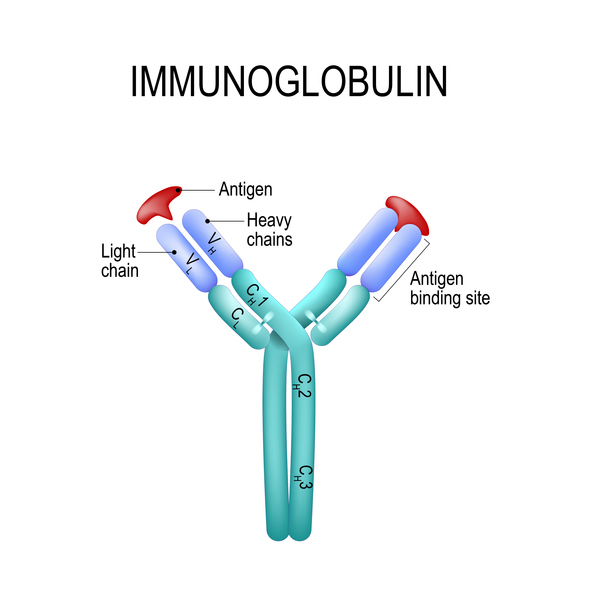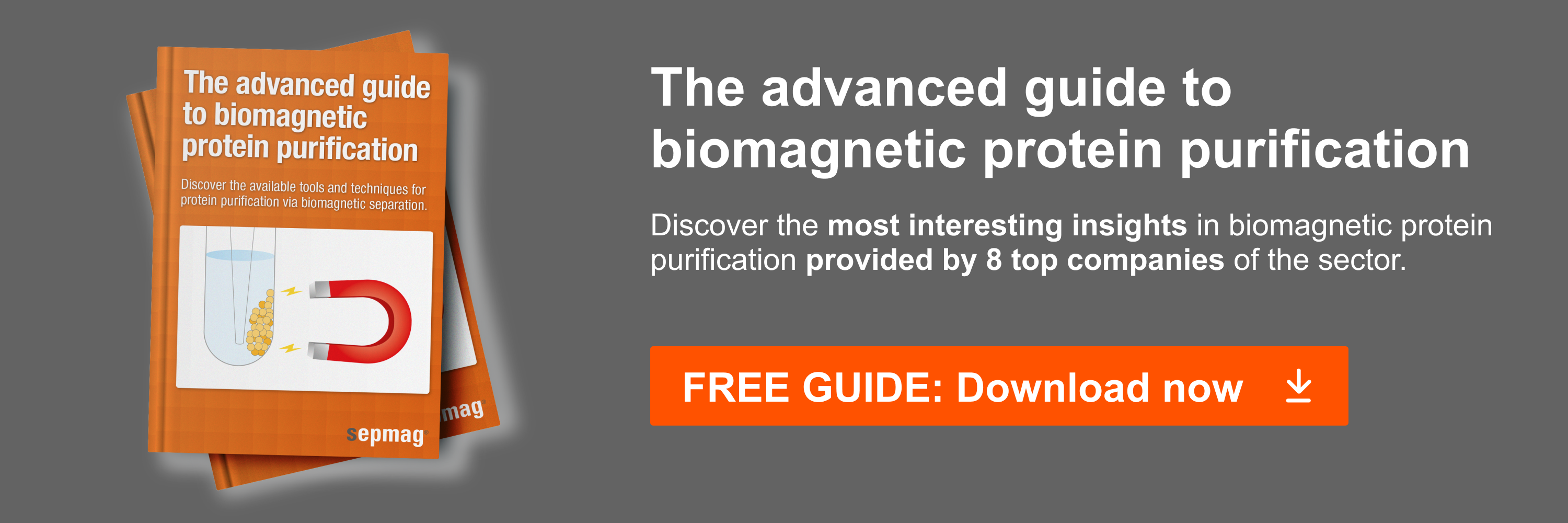Antibodies are naturally produced by the adaptive immune system in response to invading pathogens. The antibodies are made by immune cells to specifically recognize protein markers called antigens located on the outer wall or membrane of the pathogenic organism. It is this exquisite antigenic specificity that makes the adaptive immune system so remarkable in its ability to fight off a wide variety of diseases. It is also this specificity that makes the antibody-antigen interaction an attractive tool for the development of biological assays for the detection of active infection and disease.
Antigenic specificity is determined by mutations in the variable region of antibodies
Antigen-specific B cells proliferate in response to infection. These B cells have antibodies on their surface with antigenic specificity. If then immune system has previously encountered an invader, then it will have a memory of that antigen and will be able to mount a rapid response by cloning the B cells with specificity for that antigen. If the immune system is encountering an invader for the first time, then antibodies must be created that recognize the antigen. The acquisition of antigenic specificity occurs via a mutation in the variable region of the antibody. This process is aided by T follicular helper cells in germinal center reactions. This hypermutation process in B cells creates many cells with different mutations in the variable region of the antibody. The cells compete for antigen recognition and the antibodies with the highest antigen binding capacity or antigenic specificity are produced in greater quantities. Antibodies are proteins, which are polypeptides made up of many amino acids. Therefore, these antigen recognition sites are chemically compatible with the antigen because of the non-covalent interactions between the side chains of the amino acids of the antibody and the amino acids of the antigen.
Antibodies in biotechnology and the importance of antibody validation
Now that we have a good understanding of what determines the specificity of an antibody we can discuss the importance of antibody validation in the context of biotechnology and diagnostic systems. The gold standard clinical assay for many infections is the enzyme linked immunosorbent assay (ELISA). This assay capitalizes on the specificity of the antibody-antigen interaction. Antibodies are used as capture probes. A biological sample is obtained from the patient and incubated with the antibodies. If the patient has an active infection by the suspected pathogen, then there will be a binding event between the capture probe and the target antigen, and the ELISA assay will return a positive result. The physician is then able to confidently diagnose the patient and provide proper treatment. This happy chain of events can only happen if the assay is sensitive enough to detect clinically relevant levels of antigen and specific enough to only detect the antigen of interest. Imagine of the antibody had some cross-reactivity to a completely different antigen than the suspected agent of disease. This would lead to a false positive result and could result in unnecessary or ineffective treatment. The antibody validation process is designed to ensure that a commercially available antibody actually binds the antigen that is is marketed to bind. This reduces the chance of false positive results in biological assays.
How is an antibody validated?
A Western Blot (WB) is a first validation step to ensure that the antibody recognizes the denatured antigen. A single band at known target molecular weight indicates that the antibody is recognizing the target properly. Multiple bands and bands at other molecular weights can indicate breakdown products, splice variants, or different post-translational modification status. Another use for antibodies in biotechnology is for immunohistochemistry (IHC) and immunofluorescence (IF) staining of tissue. These techniques rely on the antibody-antigen specificity to label certain cell types or surface markers for basic research or clinical purposes. After an antibody is validated via WB it will also need to be validated for IHC and IF.
There is an online portal for sharing antibody validation data for WB, IHC, and IF. It is called Antibody-pedia and it only contains information about commercially available antibodies. This can be a useful resource for those who are developing new immunoassays and biosensors. However, it is important to keep in mind that although it is rare, antibodies can vary lot to lot and storage conditions do affect the stability of antibodies over time. So, while an antibody can leave a commercial vendor completely validated with quality information documented on its product sheet, it is important to consider how the antibody was shipped and stored before it came into your hands. Developers of new immunoassays and biosensors need to demonstrate specificity between antibody and antigen and they need to rule out any cross-reactivity with other antigens before their new sensor makes the leap from research lab to the commercial arena.
Related news
- ELISA steps, principle, and how it works
- Biotinylation Kit
- The purpose of antibody dilution and how to do it





